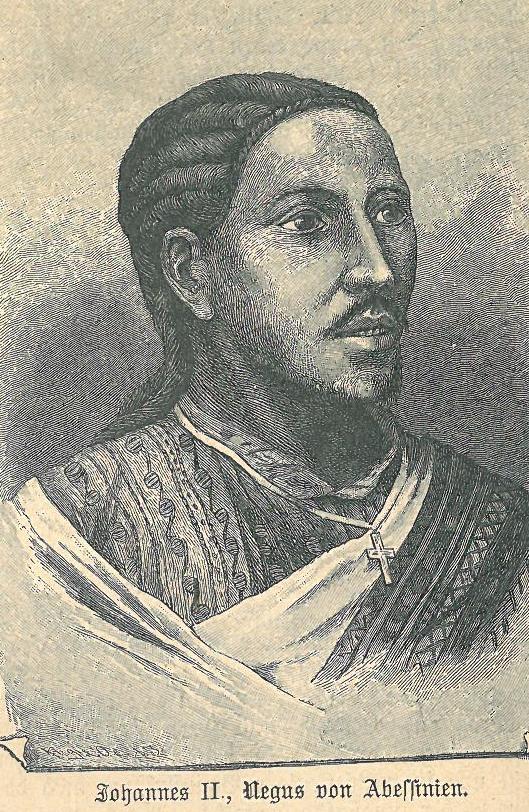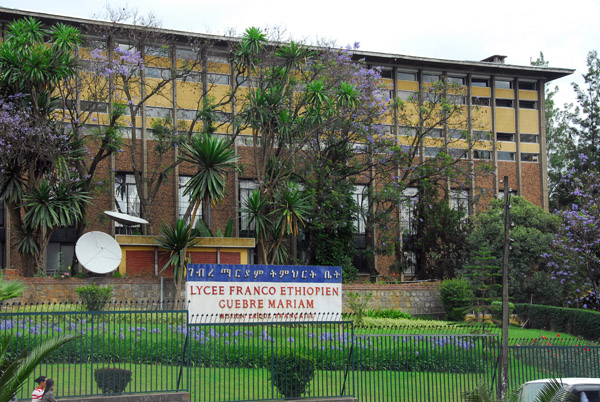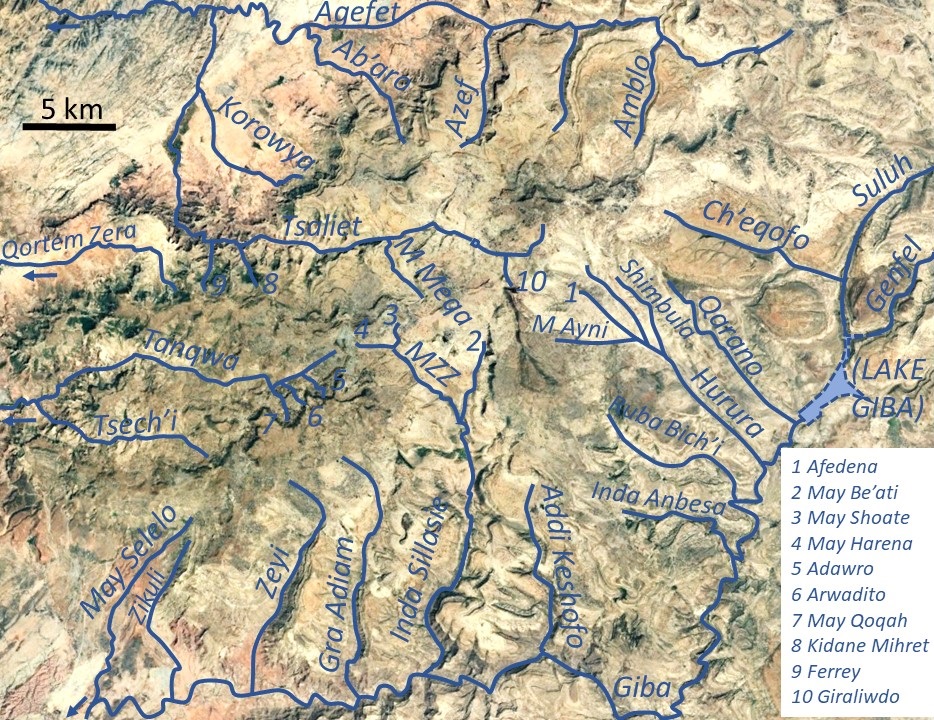|
Kola Tembien
Kola Tembien (, "Lower Tembien") is a woreda in Tigray Region, Ethiopia. It is named in part after the former province of Tembien. Part of the Mehakelegnaw Zone, Kola Tembien is bordered on the south by Abergele, on the west by the Tekezé River which separates it from the Semien Mi'irabawi (North Western) Zone, on the north by the Wari River which separates it from Naeder Adet and Werie Lehe, on the east by Misraqawi (Eastern) Zone, and on the southeast by Degua Tembien. Towns in Kola Tembien include Guya and Werkamba. The town of Abiy Addi is surrounded by Kola Tembien. Demographics Based on the 2007 national census conducted by the Central Statistical Agency of Ethiopia (CSA), this woreda has a total population of 134,336, an increase of 28.13% over the 1994 census, of whom 66,925 are men and 67,411 women; 0 or 0.00% are urban inhabitants. With an area of 2,538.39 square kilometers, Kola Tembien has a population density of 52.92, which is 56.29 than the Zone av ... [...More Info...] [...Related Items...] OR: [Wikipedia] [Google] [Baidu] |
Woreda
Districts of Ethiopia, also called woredas ( am, ወረዳ; ''woreda''), are the third level of the administrative divisions of Ethiopia – after ''zones'' and the '' regional states''. These districts are further subdivided into a number of wards called ''kebele'' neighbourhood associations, which are the smallest unit of local government in Ethiopia. Overview Districts are typically collected together into zones, which form a region; districts which are not part of a zone are designated Special Districts and function as autonomous entities. Districts are governed by a council whose members are directly elected to represent each ''kebele'' in the district. There are about 670 rural districts and about 100 urban districts. Terminology varies, with some people considering the urban units to be ''woreda'', while others consider only the rural units to be ''woreda'', referring to the others as urban or city administrations. Although some districts can be traced back to earli ... [...More Info...] [...Related Items...] OR: [Wikipedia] [Google] [Baidu] |
Degua Tembien
Dogu'a Tembien (, "Upper Tembien", sometimes transliterated as Degua Tembien) is a woreda in Tigray Region, Ethiopia. It is named in part after the former province of Tembien. Nowadays, the mountainous district is part of the Southeastern Tigray Zone. The administrative centre of this woreda is Hagere Selam. History Dogu’a Tembien holds numerous prehistoric sites, which have been dated to the Middle Stone Age in Ayninbirkekin, or Pastoral Neolithic in Aregen and Menachek. Geography Topography and landscapes Major mountains :* Tsatsen, 2815 metres, a wide mesa between Hagere Selam and Inda Maryam Qorar () :* Ekli Imba, 2799 metres, summit of the Arebay massif in Arebay ''tabia'' or district () :* Imba Zuw’ala, 2710 metres, near Hagere Selam () :* Aregen, 2660 metres, in Aregen ''tabia'' () :* Dabba Selama, 2630 metres, in Haddinnet ''tabia'' () (not to be confused with the homonymous monastery) :* Imba Dogu’a, 2610 metres, in Mizane Birhan ''tabia'' () :* Imb ... [...More Info...] [...Related Items...] OR: [Wikipedia] [Google] [Baidu] |
Monolithic Church
A monolithic church or rock-hewn church is a church made from a single block of stone. Because freestanding rocks of sufficient size are rare, such edifices are usually hewn into the ground or into the side of a hill or mountain. They can be of comparable architectural complexity to constructed buildings. The term ''monolithic church'' is used of churches in various countries, not least the complex of eleven churches in Lalibela, Ethiopia, believed to have been created in the 12th century. Ethiopia The eleven monolithic churches in Lalibela are: * Church of the Redeemer * Saint Mary * Mount Sinai * Golgotha * House of the Cross * House of the Virgins * Saint Gabriel * Abba Matta * Saint Mercurius * Immanuel * Church of St. George (Bete Giyorgis) The most famous of the edifices is the cross-shaped Church of St. George. Tradition credits its construction to the Zagwe dynasty King Gebre Mesqel Lalibela, who was a devout Orthodox Tewahedo Christian. The medieval monolith ... [...More Info...] [...Related Items...] OR: [Wikipedia] [Google] [Baidu] |
History Of Tembien
Tembien (Tigrigna: ተምቤን) is a historic region in Tigray Region and former provinces of Ethiopia. It is a mountainous area of that country. During the reforms in 1994–95, the old provinces were replaced with regions, zones and woredas. The area of the former province is now split over the woredas of Dogua Tembien and Kola Tembien. It was located east of the Semien Province and north of Abergele, a historic district of the Begemder province. On the east, it was bordered by the Enderta Province. The original capital of the province was Melfa, west of the current town of Hagere Selam; later on Abiy Addi, nowadays located in Kola Tembien (''Lower Tembien''), became the capital. The region reached a highpoint in the Tsatsen mountains at 2828 meters above sea level, just south of Hagere Selam. Prehistory Tembien holds numerous prehistoric sites, which have been dated to the Middle Stone Age in Ayninbirkekin, or Pastoral Neolithic in Aregen and Menachek. The Dabo Ze ... [...More Info...] [...Related Items...] OR: [Wikipedia] [Google] [Baidu] |
Water Supply And Sanitation In Ethiopia
Access to water supply and sanitation in Ethiopia is amongst the lowest in Sub-Saharan Africa and the entire world. While access has increased substantially with funding from foreign aid, much still remains to be done. Some factors inhibiting the achievement of these goals are the limited capacity of water bureaus in the country's nine regions, two city administrations and water desks in the 770 districts of Ethiopia (''woreda''s); insufficient cost recovery for proper operation and maintenance; and different policies and procedures used by various donors, notwithstanding the Paris Declaration on Aid Effectiveness. In 2001 the government adopted a water and sanitation strategy that called for more decentralized decision-making; promoting the involvement of all stakeholders, including the private sector; increasing levels of cost recovery; as well as integrating water supply, sanitation and hygiene promotion activities. Implementation of the policy apparently is uneven. In 2005 ... [...More Info...] [...Related Items...] OR: [Wikipedia] [Google] [Baidu] |
Education In Ethiopia
Education in Ethiopia was dominated by the Ethiopian Orthodox Church for many centuries until secular education was adopted in the early 1900s. Prior to 1974, Ethiopia had an estimated illiteracy rate below 50% and compared poorly with the rest of Africa in the provision of schools and universities. After the Ethiopian Revolution, emphasis was placed on increasing literacy in rural areas. Practical subjects were stressed, as was the teaching of socialism. By 2015, the literacy rate had increased to 49.1%, still poor compared to most of the rest of Africa. Recently, there has been massive expansion throughout the educational system. Access to primary schools is limited to urban locations, where they are mostly private-sector or faith-based organizations. Primary school education consists of two cycles: grades 1 to 4 and grades 5 to 8. Secondary schools also have two cycles: grades 9 to 10 and grades 11 to 12. Primary schools have over 90% of 7-year-olds enrolled although only about ... [...More Info...] [...Related Items...] OR: [Wikipedia] [Google] [Baidu] |
Islam In Ethiopia
Islam is the second-largest religion in Ethiopia behind Christianity, with 31.3 to 35.9 percent of the total population of around 113.5 million people professing the religion as of 2022. Islam in Ethiopia dates back to the founding of the religion; in 615, when a group of Muslims were counseled by Muhammad to escape persecution in Mecca and Migration to Abyssinia, travel to Ethiopia via modern-day Eritrea, which was ruled by Najashi, a pious Christian king. It is agreed by Islamic scholars that Najashi First Hejira, gave shelter to the Muslim refugees around 615–616 at Axum. Bilal ibn Ribah, the first Muezzin, the person chosen to call the faithful to prayer, and one of the foremost companions of Muhammad, was born in Mecca to an Abyssinian (Ethiopian) mother. Introduction Islam was in 2007 the second largest religion in Ethiopia with over 33.9% of the population. The faith arrived in Tigray Region, Tigray, north of Ethiopia, at an early date, shortly before the Hijra (Isl ... [...More Info...] [...Related Items...] OR: [Wikipedia] [Google] [Baidu] |
Tigrinya Language
(; also spelled Tigrigna) is an Ethio-Semitic language commonly spoken Eritrea and in northern Ethiopia's Tigray Region by the Tigrinya and Tigrayan peoples. It is also spoken by the global diaspora of these regions. History and literature Although it differs markedly from the Geʽez (Classical Ethiopic) language, for instance in having phrasal verbs, and in using a word order that places the main verb last instead of first in the sentence—there is a strong influence of Geʽez on Tigrinya literature, especially with terms relating to Christian life, Biblical names, and so on. Ge'ez, because of its status in Ethiopian culture, and possibly also its simple structure, acted as a literary medium until relatively recent times. The earliest written example of Tigrinya is a text of local laws found in the district of Logosarda, Debub Region in Southern Eritrea, which dates from the 13th century. In Eritrea, during British administration, the Ministry of Information put out a we ... [...More Info...] [...Related Items...] OR: [Wikipedia] [Google] [Baidu] |
Tigrayans
Tigrayans ( ti, ተጋሩ) are a Semitic-speaking ethnic group indigenous to the Tigray Region of northern Ethiopia. They speak the Tigrinya language, an Afroasiatic language belonging to the Ethiopian Semitic branch. The daily life of Tigrayans is highly influenced by religious concepts. For example, the Christian Orthodox fasting periods are strictly observed, especially in Tigray; but also traditional local beliefs such as in spirits, are widespread. In Tigray the language of the church remains exclusively Ge’ez. Tigrayan society is marked by a strong ideal of communitarianism and, especially in the rural sphere, by egalitarian principles. This does not exclude an important role of gerontocratic rules and in some regions such as the wider Adwa area, formerly the prevalence of feudal lords, who, however, still had to respect the local land rights. History The majority of Tigrayans trace their origin to early Semitic-speaking peoples whose presence in the region dates bac ... [...More Info...] [...Related Items...] OR: [Wikipedia] [Google] [Baidu] |
Ethiopian Orthodox Christianity
The Ethiopian Orthodox Tewahedo Church ( am, የኢትዮጵያ ኦርቶዶክስ ተዋሕዶ ቤተ ክርስቲያን, ''Yäityop'ya ortodoks täwahedo bétäkrestyan'') is the largest of the Oriental Orthodox Churches. One of the few Christian churches in sub-Saharan Africa originating before European colonization of the continent, the Ethiopian Orthodox Tewahedo Church dates back to the acceptance of Christianity by the Kingdom of Aksum in 330, and has between 36 million and 49.8 million adherents in Ethiopia. It is a founding member of the World Council of Churches. The Ethiopian Orthodox Tewahedo Church is in communion with the other Oriental Orthodox churches (the Eritrean Orthodox Tewahedo Church, the Coptic Orthodox Church of Alexandria, the Malankara Orthodox Syrian Church, the Armenian Apostolic Church, and the Syriac Orthodox Church). The Ethiopian Orthodox Tewahedo Church had been administratively part of the Coptic Orthodox Church of Alexandria from the first ... [...More Info...] [...Related Items...] OR: [Wikipedia] [Google] [Baidu] |
Central Statistical Agency (Ethiopia)
The Central Statistical Agency (CSA; Amharic: ማዕከላዊ ስታቲስቲክስ ኤጀንሲ) is an agency of the government of Ethiopia designated to provide all surveys and censuses for that country used to monitor economic and social growth, as well as to act as an official training center in that field. It is part of the Ethiopian Ministry of Finance and Economic Development. The Director General of the CSA is Samia Zekaria. Before 9 March 1989 the CSA was known as the Central Statistical Office (CSO). The CSA has 25 branch offices. Besides the capital city of Addis Ababa, the cities and towns with offices are: Ambo, Arba Minch, chiro, Asayita, Assosa, Awasa, Bahir Dar, Debre Berhan, Dessie, Dire Dawa, Gambela, Goba, Gondar, Harar, Hosaena, Inda Selassie, Jijiga, Jimma, Mek'ele, Mizan Teferi, Adama, Negele Borana, Nekemte, and Sodo. National censuses of the population and housing have been taken in 1984, 1994, and 2007. Information from the 1994 and 2007 censuses ar ... [...More Info...] [...Related Items...] OR: [Wikipedia] [Google] [Baidu] |
Tsaliet River Near Addeha
Tsaliet is a river in northern Ethiopia, belonging to the Nile basin. Rising in the mountains of Dogu’a Tembien, where it is first called May Leiba River and then Tinsehe River, it flows westward through a deep gorge, to become Tsaliet in its lower course, where it empties in Weri’i River, just upstream of the main Weri’i bridge along the road to Adwa. Characteristics It is mostly a confined river, locally meandering in its narrow alluvial plain, with an average slope gradient of 25 metres per kilometre. With its tributaries, the river has cut deep gorges. Along the middle of its course, it occupies sandy pediments in Addeha. Flash floods and flood buffering Runoff mostly happens in the form of high runoff discharge events that occur in a very short period (called flash floods). These are related to the steep topography, often little vegetation cover and intense convective rainfall. The peaks of such flash floods have often a 50 to 100 times larger discharge than the ... [...More Info...] [...Related Items...] OR: [Wikipedia] [Google] [Baidu] |








